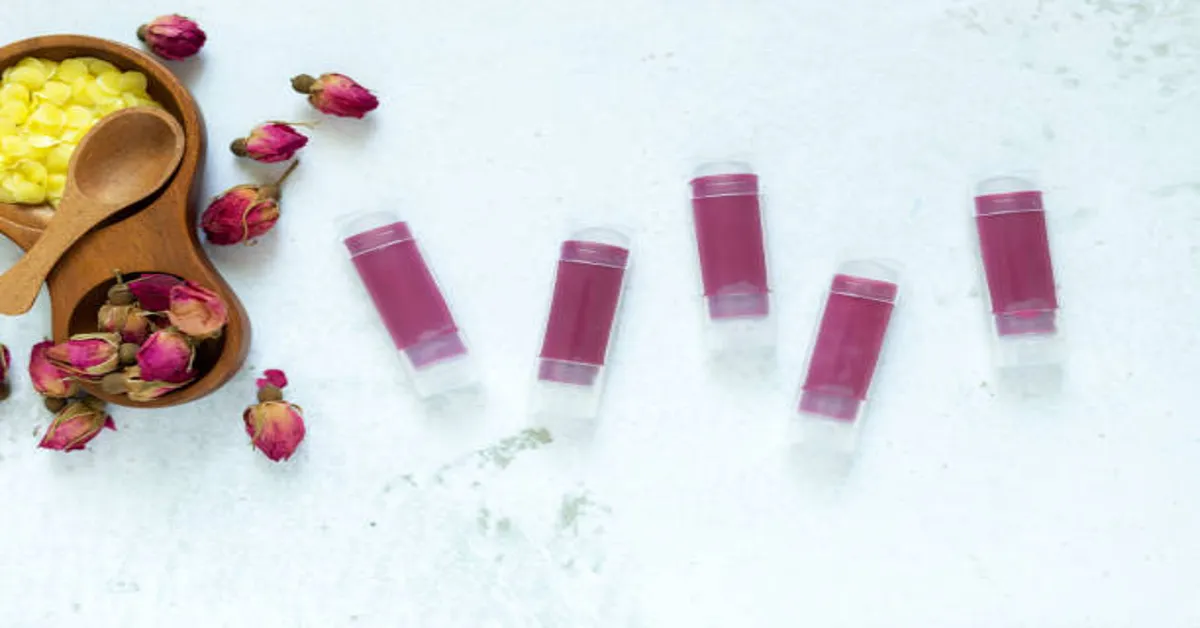Beetroot lip balm is a rising favorite among beauty and skincare enthusiasts who prefer natural and chemical-free alternatives for their lip care routine. Known for its naturally rich pigmentation and nutrient-packed profile, beetroot offers multiple benefits for lip health. When formulated into a lip balm, beetroot becomes a powerhouse of hydration, healing, and natural tinting that not only protects your lips from dryness and cracks but also enhances their natural color over time. This article will explore the origin, composition, benefits, methods of preparation, usage, safety considerations, and variations of beetroot lip balm in rich detail, offering a comprehensive guide to this wonderful natural beauty product.
The Origins and Rise of Natural Lip Care with Beetroot
Lip care has long been a part of human grooming habits, with ancient civilizations using plant oils, animal fats, and natural pigments to soften and protect the lips. Over time, synthetic cosmetics gained popularity, but the resurgence of interest in natural and organic ingredients has brought many traditional remedies back into focus, including beetroot. Beetroot, or Beta vulgaris, is a root vegetable known for its vibrant red-purple hue and is commonly used in food, health juices, and herbal medicine. The same pigment that stains hands and cutting boards with a pinkish-red tint—called betalains—has been repurposed into skincare due to its coloring, antioxidant, and anti-inflammatory properties.
Beetroot’s ability to impart color while also nourishing the skin makes it particularly appealing in lip care. Beetroot lip balm thus serves two essential functions: it acts as a moisturizing barrier to protect delicate lip skin, and it imparts a natural rosy tint without the use of synthetic dyes. As clean beauty trends grow, more consumers are turning toward products that deliver results without compromising on ingredient integrity, making beetroot lip balm an ideal choice for the conscious user.
Key Components and Nutritional Profile of Beetroot
Before understanding the benefits of beetroot lip balm, it is essential to understand what makes beetroot such a beneficial ingredient for the skin. Beetroot is rich in essential vitamins and minerals, including vitamin C, potassium, iron, and manganese. These nutrients help in tissue repair, boosting collagen production, and preventing oxidative damage caused by free radicals. Moreover, beetroot contains nitrates and antioxidants like betalains that have anti-inflammatory and detoxifying properties.
The natural pigment found in beetroot, primarily betanin, not only gives the vegetable its striking red color but also serves as a gentle, skin-safe tint. Betanin has been shown to have cell-protecting effects due to its antioxidant nature, making it suitable for topical application, especially on sensitive areas like the lips.
When beetroot is used in lip balm, it is typically infused into oils, waxes, or butters that form the base of the balm. These include nourishing ingredients like shea butter, cocoa butter, beeswax, coconut oil, or almond oil, all of which contribute additional moisturizing and healing properties. The final result is a product that offers both beauty and health benefits.
Benefits of Using Beetroot Lip Balm
Beetroot lip balm offers a wide array of benefits that go beyond simple hydration. While its primary appeal lies in its natural tinting ability, it also works holistically to improve lip health.
1. Natural Tinting Without Chemicals
One of the most attractive aspects of beetroot lip balm is the gentle color it imparts to the lips. Unlike commercial tinted balms or lipsticks that often use artificial dyes, beetroot provides a subtle, buildable pink or red hue that looks natural and fresh. This makes it ideal for daily wear, especially for those who want to enhance their natural lip tone without makeup.
2. Deep Hydration and Moisture Lock
Beetroot is often blended with hydrating ingredients like shea butter, coconut oil, or beeswax, which help lock moisture into the lips. These ingredients create a protective barrier that prevents water loss and keeps the lips soft and supple. For people suffering from chronic dry lips, cracked skin, or peeling, beetroot lip balm can serve as an effective remedy when used consistently.
3. Antioxidant Protection
The antioxidants in beetroot protect the delicate skin on the lips from environmental damage, including pollution, UV rays, and extreme weather conditions. This helps slow down the signs of aging around the lip area, such as discoloration or fine lines.
4. Promotes Natural Healing
The anti-inflammatory and detoxifying effects of beetroot aid in the healing of minor wounds, cuts, or cracks in the lips. When paired with healing oils, it enhances cell regeneration and soothes irritation, making it particularly beneficial during winter months or in dry climates.
5. Boosts Circulation and Lip Brightness
Some believe that the natural nitrates in beetroot can boost blood flow when absorbed into the skin. This improved circulation may give lips a naturally fuller and brighter appearance over time, although the primary visual effect still comes from the pigment.
How to Make Beetroot Lip Balm at Home
Making beetroot lip balm at home is a rewarding process that allows you to control the ingredients, ensuring purity and safety. It also enables customization according to personal preferences in terms of texture, scent, and tint intensity. Here’s a basic method to create a natural beetroot lip balm.
Ingredients:
- 1 tablespoon grated fresh beetroot or 1 teaspoon beetroot powder
- 1 tablespoon coconut oil or almond oil
- 1 tablespoon beeswax (for solid texture)
- 1 teaspoon shea butter (optional, for extra softness)
- A few drops of essential oil like rose or lavender (optional)
Instructions:
- Extract Beetroot Juice (if using fresh root): Grate beetroot finely and press through a cheesecloth to extract the juice. For a richer color, simmer the grated beetroot in a small amount of water and reduce it to a thick concentrate.
- Melt the Base Oils and Waxes: In a double boiler or microwave, melt the beeswax, coconut oil, and shea butter together until fully liquefied. Stir gently to combine.
- Add Beetroot Extract: Once the base has cooled slightly but not solidified, add in the beetroot juice or powder and mix thoroughly. If using juice, be cautious with water content to prevent microbial growth.
- Add Essential Oils: For a fragrant touch, add a drop or two of essential oil, making sure it is safe for lips.
- Strain and Pour: If you used fresh juice or grated beet, strain the mixture to remove any solids. Pour the final blend into sterilized lip balm containers or tubes.
- Cool and Store: Let the lip balm cool at room temperature until solid. Store in a cool, dry place and use within a few months for best results.
Application and Usage Tips
To maximize the benefits of beetroot lip balm, apply it regularly throughout the day, especially before going outdoors or to bed. Here’s how to make the most of it:
- Apply on clean, dry lips to ensure better absorption.
- Use at night for deep hydration and natural tint development.
- Layer it under lipstick for a tinted balm effect and added moisture.
- Reapply after eating or drinking to maintain the protective layer.
- Store away from heat or direct sunlight to prevent melting or separation of ingredients.
Is Beetroot Lip Balm Safe for All Skin Types?
Beetroot lip balm is generally safe for all skin types, especially when made from organic and food-grade ingredients. However, it is essential to consider a few precautions:
- Allergic Reactions: Some individuals may be allergic to beetroot or the oils used in the balm. It’s best to do a patch test on a small area of skin before full application.
- Preservation: Because beetroot contains natural sugars and moisture, any balm made with fresh beetroot juice should be used quickly or stored in the refrigerator. Using beetroot powder is often safer and extends the shelf life.
- Children and Sensitive Users: Beetroot balm is gentle and safe for kids and people with sensitive skin, but again, patch testing is advisable.
Variations of Beetroot Lip Balm
The basic recipe can be modified to create different textures, colors, and benefits. Here are some popular variations:
- Tinted Beetroot Lip Gloss: Use a lighter oil-to-wax ratio and add a touch of mica shimmer for a glossy finish.
- Matte Beetroot Lip Balm: Increase the beeswax content and skip the shea butter for a more matte texture.
- Flavored Beetroot Balm: Add natural food-safe flavor oils like vanilla or mint for added appeal.
- SPF Beetroot Balm: Incorporate natural SPF ingredients like zinc oxide or red raspberry seed oil to provide sun protection.
- Vegan Version: Replace beeswax with candelilla wax or carnauba wax to make a plant-based version.
Environmental and Ethical Advantages
Beetroot lip balm, especially when homemade or sourced from ethical brands, is more sustainable and environmentally friendly than mainstream cosmetic products. It reduces dependency on petroleum-based ingredients, synthetic colors, and plastic packaging. Many small-batch producers use recyclable or biodegradable containers, adding to the product’s eco-conscious appeal. Moreover, it supports the clean beauty movement, which emphasizes transparency, safety, and sustainability in personal care.
Commercial vs. DIY: Which is Better?
While DIY beetroot balm offers control over ingredients and is cost-effective, commercial products have the advantage of enhanced preservation, standardized tint, and longer shelf life. Reputable brands also test for microbial growth and stability, ensuring safety. However, not all store-bought beetroot lip balms are created equal. Consumers should look for products with minimal ingredients, clear labeling, and certifications for organic or cruelty-free standards. Ultimately, the choice between DIY and store-bought depends on personal priorities—whether it’s purity, convenience, or affordability.
Conclusion
Beetroot lip balm is a beautiful intersection of nature, skincare, and minimalistic beauty. Whether you make it at home or buy from a trusted source, this balm provides a safe, nourishing, and elegant way to care for your lips while enjoying a natural tint. Its multi-functional properties—hydration, healing, and tint—make it suitable for all ages and seasons. As the demand for clean and conscious beauty continues to rise, beetroot lip balm stands as a timeless and accessible solution for those seeking simplicity, effectiveness, and a touch of nature in their daily care rituals.
ALSO READ: The Biggest Fandom in the World: A Deep Dive into Global Fan Culture
FAQs About Beetroot Lip Balm
1. Is beetroot lip balm safe for daily use?
Yes, beetroot lip balm is safe for daily use as long as it contains natural, skin-safe ingredients without harmful preservatives or synthetic colors. Regular use helps hydrate, heal, and protect the lips.
2. Can beetroot lip balm lighten dark lips?
Over time, beetroot lip balm may help improve lip tone and reduce darkness due to its antioxidants and gentle exfoliating properties, but results vary.
3. How long does homemade beetroot lip balm last?
Homemade beetroot lip balm using fresh juice lasts around 2–3 weeks when refrigerated. Using beetroot powder extends shelf life to 2–3 months.
4. Can I use beetroot lip balm at night?
Yes, applying beetroot lip balm at night offers deep hydration and allows the tint to subtly enhance the lips overnight.
5. Does beetroot lip balm work on chapped lips?
Absolutely. The moisturizing oils and natural anti-inflammatory properties of beetroot can soothe and repair chapped, cracked lips effectively.









